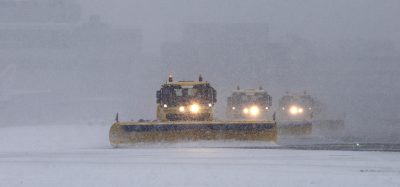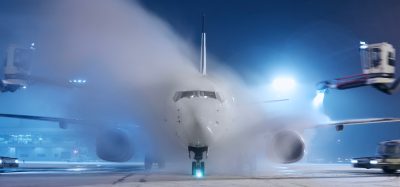Winter at Oslo Airport, Gardermoen (OSL)
- Like
- Digg
- Del
- Tumblr
- VKontakte
- Buffer
- Love This
- Odnoklassniki
- Meneame
- Blogger
- Amazon
- Yahoo Mail
- Gmail
- AOL
- Newsvine
- HackerNews
- Evernote
- MySpace
- Mail.ru
- Viadeo
- Line
- Comments
- Yummly
- SMS
- Viber
- Telegram
- Subscribe
- Skype
- Facebook Messenger
- Kakao
- LiveJournal
- Yammer
- Edgar
- Fintel
- Mix
- Instapaper
- Copy Link
Posted: 28 March 2008 | Erik Gill, Director of Airport Services, Oslo Airport | No comments yet
Based on many years of experience, winter at Oslo Airport is defined as the period between 15 October and 15 April. This is when we enter a period which will require the planning to have been completed and the manpower and equipment to be in place. We have to ensure that we are ready to resolve the challenges a Norwegian winter can bring.
Based on many years of experience, winter at Oslo Airport is defined as the period between 15 October and 15 April. This is when we enter a period which will require the planning to have been completed and the manpower and equipment to be in place. We have to ensure that we are ready to resolve the challenges a Norwegian winter can bring.
Oslo Airport Gardermoen has been in operation as Norway’s main airport since the autumn of 1998. On 8 October of that year, air traffic was switched there from Oslo Airport Fornebu, which until then had been Norway’s main airport. Geographically the main airport was moved from an area beside the sea, with a coastal climate, to a typically inland climate and an area which has always been noted for its heavy snowfall.
From the end of the war in 1945 until 1998, Gardermoen had been a combined civil and military airport and had handled southern Norway’s charter traffic, in addition to the military traffic. Despite the sound winter experience at both Gardermoen and Fornebu and the detailed planning in advance of the opening, the first winter was awaited with some suspense. The concept of two runways and an extensive network of taxiways presented new challenges. After the first winter it was necessary to make some fairly major changes to procedures, manning and the composition of machinery.
We are now in our tenth winter and, since those changes, we have maintained the same winter concept with just a few small adjustments. Gardermoen’s inland climate means that winter conditions can vary, from postcard-perfect bright, sunny, winter days to mild, rainy days with temperatures up to ten degrees Celsius. Sometimes our lowland location, with hills and large lakes close by, gives us great problems with freezing fog, as the lakes stay frozen until late in the winter season and produce a lot of humidity. At some temperatures this also gives us great problems with ice, which forms on the turbine blades of the aircraft engines.
In December and early January in particular, we often have days with freezing rain or freezing drizzle. This can present big problems in maintaining good braking conditions and safe operations on the runways and the manoeuvring areas.
The rules for civil aviation state that we should try to maintain clear, black runways as much as possible. In addition to using mechanical snow-removal equipment, we also use a great deal of chemicals (formate) and sand. Oslo Airport lies over a large reservoir of ground water, which means there are strict requirements about avoiding pollution. Subsequently, the use of chemicals is limited. The alternative is to use sand, which the airlines are less than happy about, since it greatly increases their maintenance costs, especially to undercarriages.
During the October to April winter period, the average total precipitation is around 250 mm, which is equivalent to a snow depth of about 2.5 metres. The toughest winter since the main airport opened was 2002/2003 when we got 270mm, all of it in the form of snow. At Gardermoen, 15cm of snow is regarded as an average snowfall and does not actually sound like very much. What people forget is that there are large areas that must be cleared of snow as quickly as possible, so as not to cause flight delays.
Oslo Airport Gardermoen has two parallel runways measuring 3,600m and 2,950m. Together with the taxiways, tarmac, de-icing areas, etc., this amounts to a good 2 million square metres (250 soccer pitches or nearly half the size of NY Central Park) to be snowploughed and treated with chemicals and/or sand, so as to achieve safe conditions. Runways and exit ways in particular are given a great deal of attention and braking conditions are always reported to the control tower after snow clearing. If conditions on the runway change significantly, new tests must be made and reported to the air traffic service.
OSL organises winter maintenance partly by using its own manpower and partly by outsourcing to external contractors. The clearing and removal of snow from the area around the terminal building, including gates, tarmac and remote parking areas, have all been outsourced, as we have found it justifiable with regard to safety. On the other hand, winter maintenance of the manoeuvring area is regarded as so critical, with regard to both quality and operational conditions for aircraft, that it is carried out by our own crews. The airport’s landside areas are totally outsourced.
De-icing of aircraft is carried out at dedicated areas at the end of each runway and is performed by two handling operators with agreements with the airlines, not by OSL. The waste liquid from the de-icing process is collected for later destruction.
Oslo Airport has 35 permanent staff members for winter maintenance, divided into 5 shifts of 7 persons, each with a duty supervisor and deputy. Each winter we employ an additional 100 people, so that a shift of 27 persons is on duty at all times. In the ten years that we have been in operation, a lot of people have been with us since day one and their experience is regarded as a major advantage. Manpower is recruited from the immediate vicinity of the airport and to date there have been no problems in finding people interested in this type of seasonal work. Many of them come from the building and construction industry, or are farmers or craftsmen.
We are very keen to ensure that the crews have the necessary competence and that the specified procedures for winter maintenance are followed. Every autumn all employees, both permanent and seasonal, take a refresher course. New staff are given full training and dry runs, with regard to both handling equipment and driving in snow-removal teams, so that the routines are fully mastered. Everyone also takes a radio communications course, with special emphasis on communication with the control tower.
Efficiency and predictability are vital elements of winter maintenance. Standard snow removal procedures have been established for how the various areas should be cleared, depending on which runway is in use. The equipment is organised into 2 snow removal groups, which begin with group 1 taking the runway, whilst group 2 takes the taxiways and exit ways. They then join forces and take the crossways between the runways, as well as the central area in front of the terminal. After this, they continue to runway 2 and repeat the process.
The entire process, from starting on runway 1 to returning there, takes 1 hour and 15 minutes. At OSL we have determined that the downtime for clearing a runway and exit ways should not exceed 15 minutes. Snow is always cleared in the direction of take-off and landing and the runway is cleared in one sweep. That means snow removal; treating with chemicals and/or sand, measuring braking values and reporting to ATC must all occur within 15 minutes, before the runway may be turned over to ATC and to air traffic.
Good communication with ATC is vital for the system to work, and the number of exit ways to be opened up is determined from the anticipated traffic. Snow removal proceeds for as long as it is snowing and continues with ensuring that all signs, markings and lamps are visible.
The clearing of reflective surfaces on the glide paths and lower priority areas is also carried out during this secondary phase. The 15 minute closure time is based on the machinery available and OSL does not see any great probability of reducing it any further whilst still achieving a result, after snow removal, that meets safety requirements.
To obtain the best result, it is important to start snow removal and runway preparation as soon as it starts to snow or freeze. We make use of aids such as; weather radar, ice detection systems on the runways and trend warnings from the Norwegian Meteorological Institute. During the winter months we also have weekly meetings with meteorologists, ATC and the airlines, to review the weather prognoses.
Oslo Airport owns the equipment used for winter maintenance of the areas we take care of. We currently have the following equipment:
- 19 RS 400/200 sweepers
- 3 large self-propelled snow blowers
- 2 unit ploughs
- 4 sand spreaders
- 3 chemical spreaders for runway de-icing
- 3 Saab friction tester vehicles
- 6 wheeled loaders
- + various smaller equipment
Overall, the equipment functions well and OSL has two new Øveraasen TV2000 snow blowers on order. One is due for delivery in mid April and the other in September 2008. During the 2006/2007 season, OSL had 47 winter days, i.e. days with snowfall. The total operating time of the machinery was 13,000 hours, sand consumption amounted to 9,500 tons and we used 820,000 litres of runway de-icing fluid.
Given the competence of the maintenance staff, good procedures and good equipment, it is very seldom indeed that OSL has to close the airport; but we had to do this, for the first time since we opened, on Friday 1 February 2008. 16cm of heavy, wet snow fell in just two hours and in total 33cm fell in the course of the five hours the weather lasted. We kept pace with it for a long time, but unfortunately it became impossible to meet the safety requirements for snow depth and friction and closure became inevitable.
OSL was closed for 5 hours before we achieved acceptable values again. The event was evaluated and with the addition of the two new snow blowers, we are reasonably certain that in the face of similar snowfall in the future, we will be able to master the task of achieving safety conditions that meet the requirements of the authorities.
About the author
Mr Gill is responsible for fire rescue services, outdoor area services and security services. Airport Services is OSLs largest division in terms of manpower and operations. Mr Gill graduated in mechanical and heating, ventilation and sanitation engineering, from the University of Gothenburg, in 1966. Gill has worked for Norwegian Air Traffic and Airport Management (NATAM) since 1972, first as Technical Manager at Oslo Airport, Gardermoen, until 1990, then as Airport Director on Svalbard from 1990 to 1993. He was also head of department for Airport Services at Gardermoen from 1993 until he joined OSL in June 1996.

















